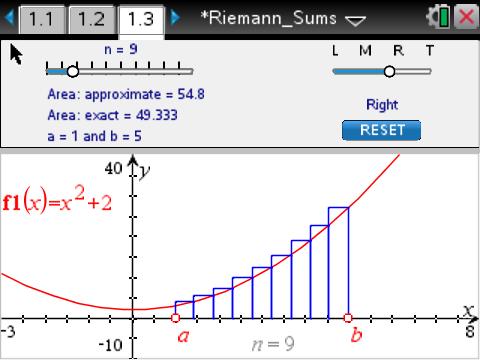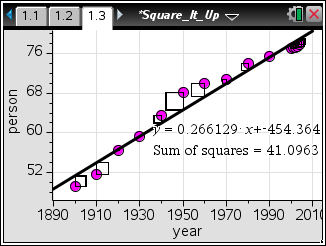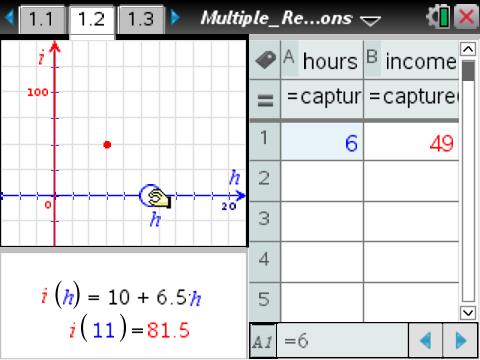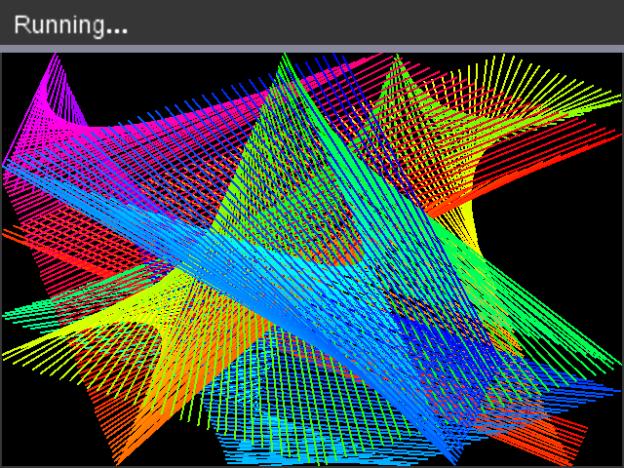 Why do I attend T3 International Conference?
Why do I attend T3 International Conference?I started writing this post when I arrived at the T3 (Teachers Teaching with Technology) international conference on Thursday and this is my first chance to really sit down and finish it. At the start of the conference, maybe out of a sense of nostalgia, I was really stumped trying to go back through the years and recall the first one I attended. I think my difficulty recalling that is attributable to many factors but top of that list is my trouble recalling anything now.
As the days wore on and I connected with more and more colleagues I realized it was 2007 in Chicago. I recall driving to Chicago from Brampton, an 8 hour trek, right after school. Not too sure what I was thinking. I do know that I was eager to see what teachers were doing with the latest in handheld technology, the TI-Nspire CAS. But here I am in 2019 and this year's conference, the 31st, took place in Baltimore, and I ask myself the question, if I was not a T3 instructor, would I have come back to this conference?
Over that time, the sessions on the program have changed to reflect a changing focus in the math classroom. The TI-Nspire technology itself sustained a period of learning and creativity with its document model that connected a variety of applications. You could graph a function but also have it available for calculations on a calculator page or a spreadsheet page. As a teacher of data management, the device liberated me from the need to book a computer lab in order to work with data. There was a period where teachers across the globe were creating advanced constructions with the technology to make math more visual.



The technology advanced each year and opened up new opportunities. The ability to embed graphics into documents, the ability to collect real-world data with probes, the ability to code on the same device that you calculate the sine of an angle and the use of interactive math boxes (a small change that reaped big rewards). This is just a sample of the changes made to the technology but this ignores what else was being introduced to support teachers. The ability to monitor student progress using Navigator as students were interacting with the math gave teachers a tool for formative assessment. And the most recent advance has capitalized on the programming platform within the technology to embed more experiential learning with the use of TI Innovator and Rover.
The learning beyond the technology has also been rewarding. This year especially I was impressed with the closing keynote from Dr. Valerie Camille Jones (@drvcjones). An amazing amount of content and inspiration packed into only 45 minutes!
 I have been fortunate enough to attend the conferences and see what this technology is capable of but that is NOT why I go back to this conference. It is of a course a part of it. The opportunity to see something that I haven't seen before that I can bring back to my own classroom and share with others is a big reason as to why I attend but I would say it is secondary to the primary reason and that is the community of learners that attends with me. I would venture that this is the reason that many of us attend any conference. The learning is essential but it is the network of contacts with committed and passionate educators that makes the experience truly meaningful. I know that in my time organizing conferences that the feedback that tops the list from attendees is the opportunity to share and talk with other teachers. And so it is with me and T3. The opportunity to sit and talk with Canadian educators like Tom Steinke (@tomsteinke), Rick Snow (@ricksnowaputi), Darryl Marchand, Fred Ferneyhough, Jim Nakamoto, and Kevin Spry (@kspry) to name just a few. There are friends scattered across the states that I look forward to seeing and learning from like Michelle Reinhart (@HowWeTeach), Todd Morstein, Betty Gasque, Corey Boby and the list could go on and on. This is the reason I scrambled to make my plans for the days I would be absent and rushed to the airport for a flight to Baltimore this year (being away from the cold and snow played no part in it). And this is the reason I will go back again. There is other technology out there and I know it does amazing things. But more important than what the technology can do is who is using that technology and how are they using it. It is that committed community that sees the potential to impact student learning for the better that drives me (and I would say all of us) to take the risk and become a learner again.
I have been fortunate enough to attend the conferences and see what this technology is capable of but that is NOT why I go back to this conference. It is of a course a part of it. The opportunity to see something that I haven't seen before that I can bring back to my own classroom and share with others is a big reason as to why I attend but I would say it is secondary to the primary reason and that is the community of learners that attends with me. I would venture that this is the reason that many of us attend any conference. The learning is essential but it is the network of contacts with committed and passionate educators that makes the experience truly meaningful. I know that in my time organizing conferences that the feedback that tops the list from attendees is the opportunity to share and talk with other teachers. And so it is with me and T3. The opportunity to sit and talk with Canadian educators like Tom Steinke (@tomsteinke), Rick Snow (@ricksnowaputi), Darryl Marchand, Fred Ferneyhough, Jim Nakamoto, and Kevin Spry (@kspry) to name just a few. There are friends scattered across the states that I look forward to seeing and learning from like Michelle Reinhart (@HowWeTeach), Todd Morstein, Betty Gasque, Corey Boby and the list could go on and on. This is the reason I scrambled to make my plans for the days I would be absent and rushed to the airport for a flight to Baltimore this year (being away from the cold and snow played no part in it). And this is the reason I will go back again. There is other technology out there and I know it does amazing things. But more important than what the technology can do is who is using that technology and how are they using it. It is that committed community that sees the potential to impact student learning for the better that drives me (and I would say all of us) to take the risk and become a learner again.

No comments:
Post a Comment